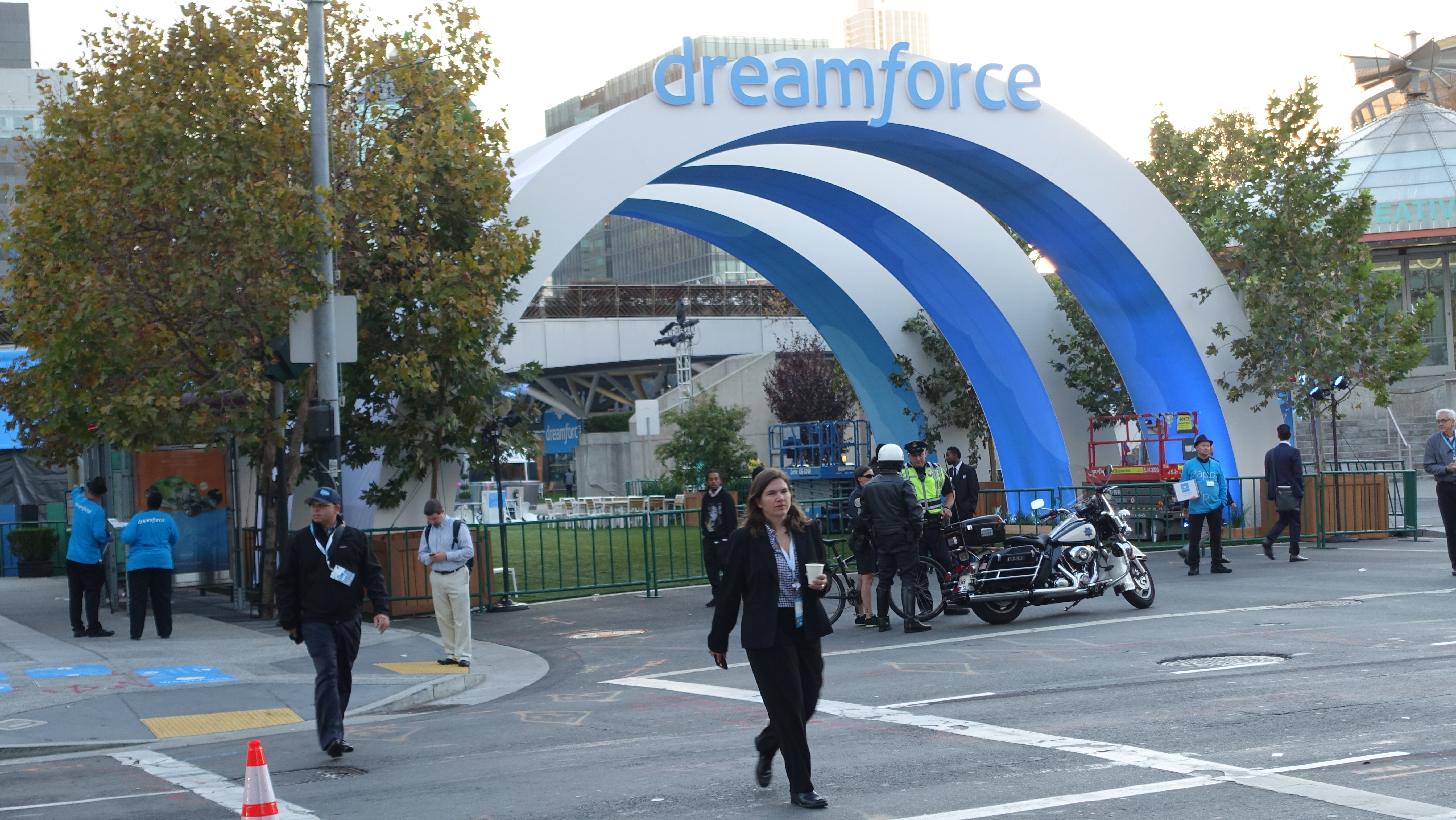Microsoft's Nadella shows the softer side of Microsoft
Cortana goes rogue at Dreamforce

The common theme at Dreamforce 2015 is soul, and how a company has heart. The term was brought up during several keynotes on Wednesday, including a talk with Uber CEO Travis Kalanick, a keynote by Saslesforce CEO Marc Benioff and in a fireside chat with Microsoft CEO Satya Nadella.
Now into his second year leading Microsoft through the cloud-first, mobile-first vision, Nadella highlights that software and services is about collaboration, noting that Microsoft wants to "add value" for customers to help them "make decisions that make sense for them."
In a chat with Wired's Jessi Hampel, Nadella showed its soul, or heart, a term that Benioff loosely describes as a company's vision to help shape, change and influence the world for the better, by announcing a $75 million project to bring technology to schools. The soul for Microsoft is education.
Shaping the future
"Education is what's going to make a difference," Nadella effused. It is education that will help make a difference in the world, and Nadella's vision is to help children participate in "the future economy."
Nadella wants that also be part of Microsoft's culture, which he defines as the pursuit of excellence. His job as CEO is to help shape and define Microsoft's culture and give it soul.
A better trained workforce through Nadella's help in bringing technology to education would certainly help Microsoft pursue greater excellence. During his keynote, Nadella calls out the non-profit Technology Education and Literacy in Schools (TEALS) as a partner.
Microsoft's technology
Nadella showcased Microsoft's various technologies on stage during his keynote, including a demonstration of HoloLens.
Are you a pro? Subscribe to our newsletter
Sign up to the TechRadar Pro newsletter to get all the top news, opinion, features and guidance your business needs to succeed!
It's a mind-blowing piece of technology, Nadella said of HoloLens, showcasing the future of natural user interfaces and interactions that extend beyond just touch.
Nadella even used an iPhone on stage, a phone that he said was not his own. The Apple smartphone was loaded with Microsoft's apps, a shift to the mobile-first vision that he's been espousing, and as such Nadella labelled the phone as an "iPhone Pro" loaded with Microsoft technology.
Not all was successful on stage, as Nadella asked the iPhone, using Cortana, to show him his biggest opportunity risks. Cortana didn't quite understand the Microsoft CEO, and returned a few incorrect answers. But after several attempts, Cortana finally got it with a little backstage intervention.
RealSense 3D for Windows Hello login was also demonstrated. Windows Hello helps to reduce the friction in keeping PCs secure, eliminating the password and replacing it with biometrics on Windows 10.
In the end, Microsoft wants to make computing more personal and natural with these technologies, Nadella said.
"The point is for each one of us to get more out of our lives," Nadella announced. Technology should help you get more out of your data to give you time back.
That message was also conveyed earlier in the day when Uber's Kalanick said that the technology-driven ride-sharing company's goal is to reduce congestion, make commuting accessible and provide a reliable and safe ride. In the end, Kalanick said that city commuters could gain an hour back in their lives, time that they can either donate to the community, spend with family or enjoy on their own. The community aspect is part of the "soul" of Uber.
The Nadella era
Nadella's tenure at Microsoft is setting a softer tone for Microsoft, which is embracing rivals as partners. A few years ago, it would have been hard to envision Microsoft demonstrating technology on an iPhone or even embracing Salesforce, a competitor's Microsoft's own CRM platform.
But Nadella is shaking things up, saying that he is setting the culture as the pursuit of excellence. This should help provide the opportunity for further collaborations and partnerships.
Of the Nokia business deal that resulted in a massive write-down and layoffs, Nadella said that it's not about a device-centric approach, but the experience as a whole.
"The PC was successful, but then there was the smartphone," Nadella said. "Microsoft has to support the mobility experience."
His answer continues to call upon the mobile-first, cloud-first paradigm, to bring a better mobile and connected experience to users by using Microsoft technology. Whether that's Office or Cortana on an iPhone, or partnering with Salesforce to bring a better experience to Office 365 users, we're seeing a softer, more open Microsoft under Nadella.
- Read our review of Windows 10